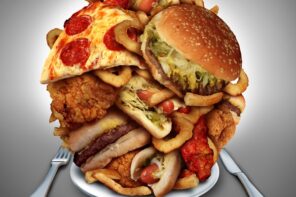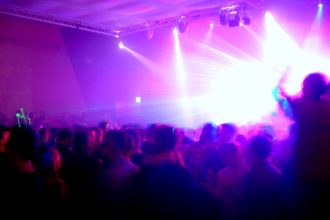It’s interesting to note that of the at least 10 million of Canada’s population that have drank a “cold one”, not many know what exactly they’re sipping on.
Reminisce about the time you were in the happiest place on Earth: sitting on those OAP lawn chairs, chatting with a few friends, drink in hand. Did you know exactly what you were consuming?
What is Beer?
Beer; /bi(ə)r/ noun. “an alcoholic drink made from yeast-fermented malt flavored with hops” Also known as: the social lubricant, bee’s knees, nectar of the gods, draft, brew, nature’s gift to mankind etc.
Beer is one of the world’s oldest prepared beverages, recorded in the ancient histories of Babylonia (present day Iraq) and Egypt, dating back to 4000 BC. Fast forward to the first world food ingredient regulation: The Reinheitsgebot or German Purity Law in of 1516. This law states that beer can only be brewed from 3 ingredients: water, hops and malt. The usage of yeast was allowed later, when it was shown to be the biological organism responsible for fermentation.
So, to sum it all up:
Beer = water + malted barley + hops + yeast.
At the ingredient level:
Water is, unsurprisingly, the main ingredient in beer. It’s interesting to note that in different parts of the world, the water quality can have a large effect on taste. For example, in Dublin, the harder mineral water is better for making Guinness, a popular dark beer. The other two ingredients, malt and hops, also grow and taste differently region to region, giving rise to a multitude of flavours.
Malt, or malted barley, provide the fermentable sugars needed in beer. The malting procedure includes converting starch from insoluble to soluble, reducing large and complex proteins, developing enzymes, and nutrient generation for yeast growth. First, raw barley is soaked in water to initiate growth. Enzymes are simultaneously produced to help break down starches (many sugar molecules joined together). Kilning then occurs, which is when barley growth is halted, using various temperatures of hot air to dry the grains. The flavor of beer is dependent on the length and temperature of kilning; usually the higher the temperature, the darker and stronger the beer flavor.
Hops, or humulus lupulus, is a plant that’s part of the Cannabaccae family (also includes the Cannabis genus, but there is no THC/psychoactive ingredient in Hops!). Prior to the Reinheitsgebot, many assortments of spices and herbs were used to add taste to beer. Hops provides the bitterness in beer due to a specific oil found in female plants, which balances the sweetness component coming from the blend of malted sugars. It also helps slow down beer spoilage, by acting as a preservative. The ratio of bitter to sweet can be modified by manipulating the type of hops used, when they’re added to the wort (another way to refer to fermented malt sugars), and the solution’s boiling time.
Yeast are single celled microorganisms responsible for converting fermentable sugars into chemical byproducts (which can modify the flavor of the final product). There are vast amounts of yeast types that can be added, which function at different temperatures and areas of the brew. Yeast is the last component added after the previous solution has cooled. Fermentation gives rise to ethyl alcohol, (the component of beer that society knows and loves) and carbon dioxide. Other chemical compounds such as esters (Fruity aromas) and acetalaldehydes (green apple aroma) also can be produced, modifying the final product.
Yeast type is the main distinguishing factor between ales and lagers (two major types of beer). Ales utilize top fermenting yeast, which is exactly what it sounds like: yeast that floats at the top of the mixture; they function at hotter temperatures. They generally are sweeter than lagers, and feel ‘heavier’ when consumed. Lagers instead have bottom fermenting yeast that function at slightly cooler temperatures. Lagers are the most consumed in the world; However, it is sometimes quite difficult to tell the difference between lager and ale.
Now that the general breakdown of beer has been done, we can classify common beer types often seen in the McGill social scene:
1. Pabst Blue Ribbon: A light pale lager; light in colour and flavour. Light beer has fewer calories and/or lower alcohol content.
2. Budweiser: A Pale Lager; Pale lager is a more fruity, copper-coloured styler; a robust beer.
3. Alexander Keith’s: India Pale Ale (IPA); Pale ale with more hops essentially. The name originates from being historically brewed in England with extra hops (recall: preservative!) to survive travels to the British army stationed in India.
4. Corona: A Pale, Pilsner lager; In addition to pale traits, pilsner means its made with neutral and hard water. Tend to be golden, dry, crispy and bitter tasting
5. Sapporo (#OAP): imported pale lager from Japan.
6. Heineken: imported pale lager from the Netherlands.
7. Sleeman: generally has a large variety of styles of beer; i.e. light, cream, IPA, draught.
8. Black bull: A malt liquor; quite different from beer, as it has just over double the alcohol content, is only bottom fermented, and less hopped than beer, therefore leading to a sweeter flavor.
I think it’s safe to say that McGill tends to have the taste buds for pale/lighter styles when it comes to brews. Either that, or it’s just the cheapest type of beer at the closest dep. At least now you know what you’re drinking. Stay classy, McGill.








